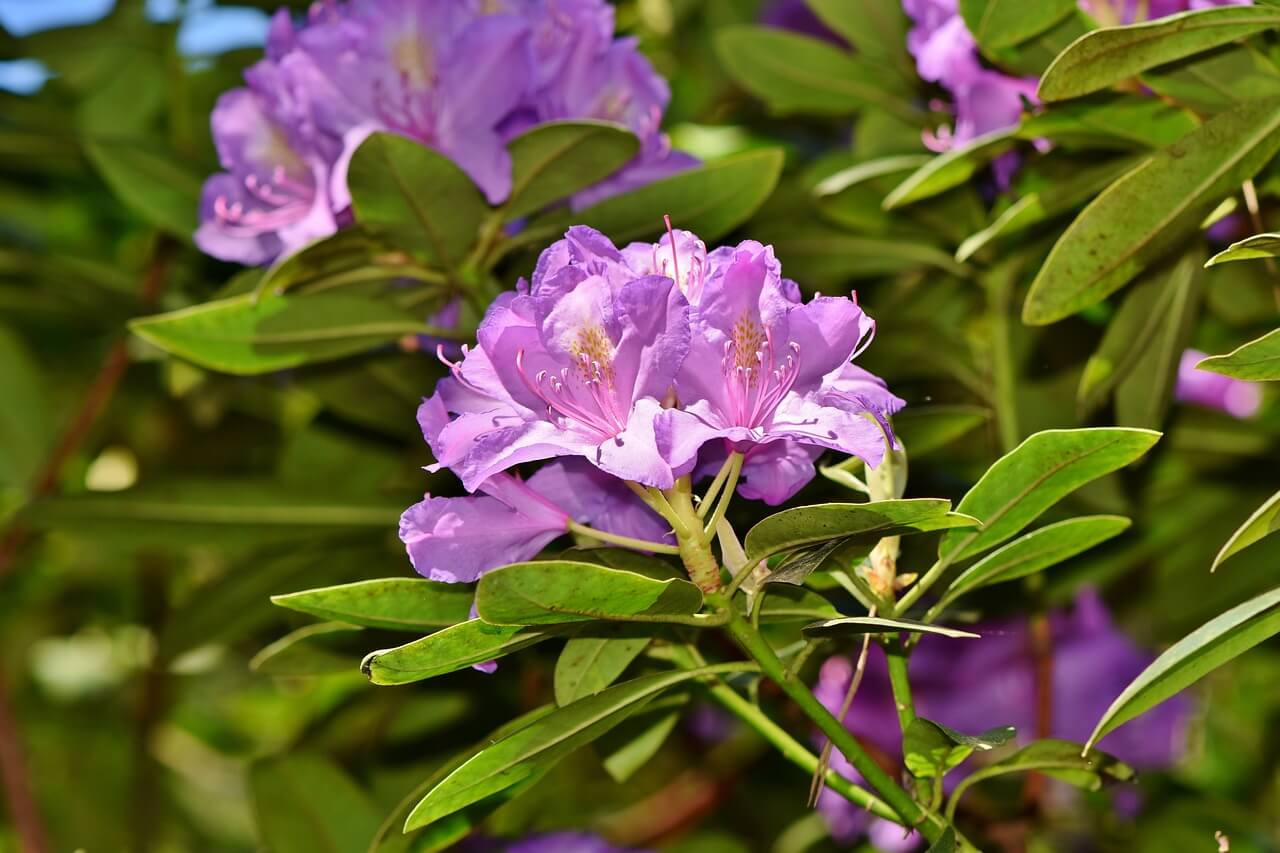Dead heading is not only good for the effect of the plants, but also good for the health of the plant. If you are looking up how to deadhead rhododendrons, you’ve come to the right place!
What You'll Learn Today
Should I Deadhead My Rhododendrons?

Dead heading rhododendrons takes very little effort, and though it is perfectly fine to NOT deadhead, there are a lot of advantages to doing so:
- You should remove the dead or wilted flowers to encourage new growth, and to increase the attractiveness of your rhododendron.
- This being said, rhododendrons don’t actually NEED to be dead headed every year (armchair gardeners will be breathing a sigh of relief!)
- If you don’t dead head every year, all that will happen is the plant will simply produce as many blooms as it did the previous year, not more. Not the end of the world!
- Dead heading will prevent the flowers turning to seed, and it can actually encourage the plant to bloom more the following year.
- If you dead head your rhododendrons after they have finished flowering, this gives the plant a chance to put all its energy into producing new flowers the following year.
- Dead heading your rhododendron also gives you a chance to check out the health of the entire bush, and to remove and dead or diseased parts of the plant.
This informative article, written by rhododendron experts, will tell you all need to know about pruning your rhododendron.
What Happens If I Don’t Deadhead My Rhododendron?
Not dead heading your rhododendrons is not the end of the world; it certainly won’t do the plant any harm.
However, not dead heading your bush will simply mean that it produces the same amount of flowers the following year, rather than more.
Also, there is the danger that your rhododendron, without regular trimming, may become out of control!
Dead heading is a good time to keep your plant in check too, and to ensure it is growing the way that you want it to.
If you miss a few years of dead heading, you may wake up one morning and find that your rhododendron has taken over your garden!
Another good reason to dead head is that it reduces the chances of fungal diseases taking over the plant, and allows you to check the health of the whole thing.
How Do You Deadhead A Rhododendron Bush?
Dead heading rhododendrons is ridiculously easy. In fact, you don’t even need to use secateurs for it.
- Locate the dead or dying flower (this will not be difficult!)
- Using a thumb and forefinger, carefully snap off the stem that holds the flower.
- Be careful to avoid the buds which may already be showing through the leaves, as these will end up as next year’s flowers.
- Don’t worry too much if you nick one of these new flower buds, but bear in mind that it may reduce your flower crop the following year.
- Rhododendron deadheads can be added to the compost pile, to provide nutrients for other plants.
- Dead heading your rhododendrons means that they will put more energy into producing new growth, rather than hanging onto the old.
This little video will show you how to dead head your rhododendrons for best results:
How Do You Care For Rhododendrons After They Bloom?
These plants don’t need a lot of fuss, but taking care of them after they bloom will reward you the following year.
- As soon as the flowers have finished, remove the dead heads as soon as you can.
- You don’t have to prune the remaining bush unless there are dead, dying or diseased limbs – cut these off as you find them.
- When you trim back your rhododendron, you should always use a sharp pair of secateurs and sterilise them after use, to control any spread of disease.
- At the beginning to middle of winter, you can fertilise your rhododendron to give it a dose of nutrients that will help it grow and flower better the following year.
- As rhododendrons bloom from spring to summer, caring for them after they bloom is similar to how you care for them in the winter.
- Ensure they are warm enough, using mulch or fleece to protect the shallow roots.
- Check the acidity of the soil – rhododendrons perform best in acidic soils.
- Water them well, especially if the season has been particularly dry and there have been long, hot days.
- Ensure that they receive adequate sunlight, and if necessary move them to a sunnier spot, or trim back other plants that may be shading them.
Dead heading rhododendrons is very good for their health, and it will also improve your chances of a decent bloom the following year. Plus, it takes very little effort. What’s not to love?
Can I deadhead my Rhododendron without shears or secateurs?
You can easily pinch off the spent flowers using just your hands, if you don’t have secateurs or if you have lost them as I do frequently! Some of the stems of this plant can be pretty tough though, so you may wish to wear gardening gloves.